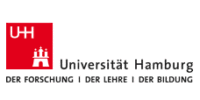How can humans and other species coexist in a way that benefits both? What are the advantages and challenges of making this ambitious project a reality?
These questions form the basis of my research into the concept of ‘Interspecies Money’, developed by Jonathan Ledgard.
A project of this complexity presents many challenges. On the ethical side, it is necessary to accurately determine the value of species, set up a central bank for the species to be protected and finance the Life Mark- the currency created for these species – as well as the technological infrastructure needed to determine the condition of the species and initiate transfers to individuals and communities (Ledgard, J. (2022)).
A study observing 12 different species in an area of 400 km² over a period of 10 months in the northern part of South Africa demonstrated the detection of animals with high accuracy and the successful transfer of payments. Mock transactions were made from 12 separate makeshift bank accounts to a central makeshift guardian account, resulting in £185.20 from 18,520 detections (Fergus, P. et al. (2022)).
In terms of funding, governments that are committed to preserving biodiversity could provide the necessary funds to support these goals. Other potential sources of funding include philanthropic organisations such as the US$10 billion Earth Fund established by Jeff Bezos, and the Terra Carta initiative of HRH the Prince of Wales. Furthermore, it is plausible to envisage a similar development with carbon credits, beginning with the shaming and sanctioning of companies that damage biodiversity. The purchase of Life Marks could be incentivised by the market, as well as by decisions made by the board and determined by law. In addition to the initial investment, further funding will be generated through the accumulation of biodiversity data, which is a valuable resource for scientific research and development (Ledgard, J. (2022)).
References:
Ledgard, J. (2022): Interspecies Money; Breakthrough, The Promise of Frontier Technologies for Sustainable Development, Homi Kharas, John W. McArthur, and Izumi Ohno
Fergus, P. et al. (2022): Empowering Wildlife Guardians: An Equitable Digital Stewardship and Reward System for Biodiversity Conservation using Deep Learning and 3/4G Camera Traps. Journal Not Specified, 1, 0.https://doi.org/10.3390/1010000

Agreement with Jörn, only to add: focus on a clear RQ or hypothesis when discussing the topic. Best wishes M
Hi Eva,
What an interesting idea. I personally, never heard of this, but it appears to be somewhat similar to carbon taxation, if I am not mistaken? Maybe I did not understand the concept yet, so this is my first hint: maybe you could explain the concept a bit more. And then, it would probably be nice to compare it with more familiar and common concepts of monetarization. Finally, you may want to discuss the deficiencies, does this concept rely on a complete understanding of the ecologic networks? Is the allocation process really efficient?
So, I have lots of questions, a clear sign of my excitement! I am really curious, so please don’t give up but make it a nice poster, I am looking forward to learn 🙂